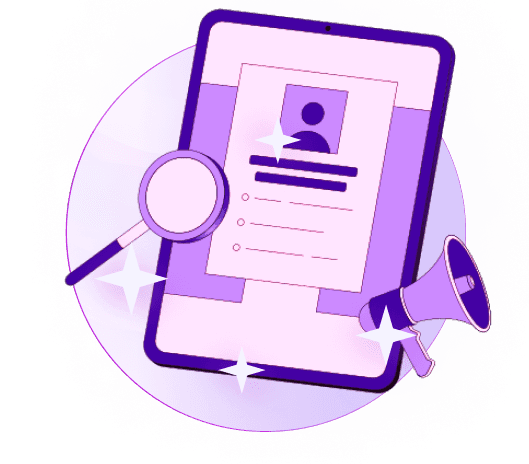Blogs
Articles

Predictive Analytics for Sales: How to Forecast and Boost Revenue
Companies using AI for sales forecasting see a 75% boost in accuracy. This leads to smarter decisions and better revenue growth.
Predictive analytics in sales forecasting does more than just improve accuracy. Your team can predict market demand changes with amazing precision by looking at past sales data and external factors like economic indicators or weather patterns. This detailed approach to predictive revenue gives useful insights based on a complete view of your sales cycle. The result is better financial planning, improved budgeting, and better overall financial health.
In this piece, we'll learn about how sales predictive analytics works and why it's changing revenue forecasting. You'll also discover steps to bring this powerful technology into your business.
What is predict sales?
Sales forecasting predicts future revenue over specific timeframes—monthly, quarterly, or annually. Teams that use evidence-based forecasting see their quota-attainment rates jump by about 20 percentage points compared to teams relying on intuition.
Sales targets represent what a business hopes to achieve. Sales forecasting, however, gives realistic predictions based on actual data and trends. This evidence-based method helps businesses predict customer demand accurately. Companies can optimize their inventory levels and use resources more effectively.
A full picture of sales combines several key sources: past sales performance, current pipeline health, market trends, and economic indicators. Companies can spot patterns that lead to more precise future sales predictions by analyzing these elements. Sales forecasting also helps businesses make smarter decisions about their marketing, resources, and planning.
Sales forecasting isn't an exact science, but it works as a strategic compass for the whole organization. Companies get better at forecasting as they gather more detailed sales data. This becomes even more valuable since 67% of sales operations leaders say sales forecasting has become harder than it was three years ago.
Sales forecasting shouldn't be a "set and forget" task. It requires constant monitoring and adjustments to keep up with changing market conditions.
What is Predictive Analytics in Sales?
Predictive analytics in sales answers a crucial question: "What could happen next?" The foundations of predictive analytics for sales use data to forecast future outcomes. This method combines historical and current data to predict trends and behaviors with remarkable precision.
Understanding predictive analytics forecasting
Sales data helps predict outcomes and improve business performance through predictive analytics forecasting. The process uses data analysis, machine learning, artificial intelligence, and statistical models to find patterns that predict future behaviors. The method follows five steps: problem definition, data acquisition, data pre-processing, predictive model development, and validation with deployment.
How it is different from traditional sales forecasting?
Traditional forecasting depends on historical data and simple trend analysis based on intuition and experience. Predictive sales forecasting uses advanced machine learning algorithms and data science techniques to analyze big data sets. Here are the main differences:
Predictive analytics processes large datasets instantly while traditional forecasting needs weeks to assess data, saving up to 80% of analysis time
The error rate drops by 20-30% with predictive analytics compared to traditional methods
Evidence-based decisions drive predictive forecasting while traditional forecasting relies on "gut feelings"
Key components of predictive sales analytics
Several essential components create predictive sales analytics. Data scientists use machine learning algorithms, regression models, and decision trees as common predictive model types. These models analyze customer's demographics, buying patterns, and engagement metrics. The system merges with CRM platforms to provide live insights that update automatically with new data.
How Predictive Analytics Works in Sales
Raw data transforms into useful insights through a systematic process of predictive analytics in sales.
Collecting and preparing sales forecasting data
The success of predictive sales analytics depends on detailed data gathered from multiple sources over 12-24 months. The data has CRM systems, point-of-sale records, e-commerce platforms, and financial information. Clean data becomes crucial to achieve accurate forecasts. Teams must remove anomalies, standardize formats, and fix errors that could hurt the forecast's accuracy.
Building and training predictive models
Organizations should pick statistical models that match their sales patterns. Simple models like moving averages work well for stable sales trends. Exponential smoothing models suit seasonal patterns better. The model learns from a portion of past data and tests its accuracy with reserved information.
Using AI and machine learning for pattern detection
AI and machine learning algorithms spot complex patterns that humans often miss. These tools process vast amounts of data quickly and find subtle links between marketing campaigns, economic indicators, and customer behavior.
Role of sales forecasting algorithms
Regression analysis algorithms measure the relationship between advertising costs and sales revenue. Time series analysis predicts future values by studying past trends. ARIMA models handle complex patterns for short-term forecasts. Neural networks excel at finding intricate relationships in large datasets.
Benefits of Predictive Analytics for Sales Teams
Predictive analytics brings remarkable benefits to sales teams that go way beyond the reach and influence of basic forecasting. The market size reached USD 12.00 billion in 2022 and experts project it to hit USD 27.00 billion by 2026. This technology has become the life-blood of modern sales operations.
Improved forecast accuracy and decision-making
Sales teams using machine learning achieve 88% accuracy in their forecasts compared to 64% with traditional spreadsheet methods. This dramatic improvement helps teams make evidence-based decisions based on probable outcomes rather than gut feel. Accurate forecasting guides resource allocation, proves business models right, and builds vital stakeholder confidence.
Optimized inventory and resource planning
Sales teams that utilize predictive analytics maintain ideal inventory levels through consumption pattern analysis. This balanced approach cuts holding costs, stops overstocking, and prevents stockouts. Retailers who use predictive inventory management tools gain substantial advantages. They can better arrange production with market demands while getting the most from their resources.
Personalized marketing and lead scoring
Predictive models help marketers group customers based on their behaviors, purchases, and browsing patterns. These groups receive tailored marketing campaigns with customized content that substantially boost participation and conversion rates. The recommendation engines maximize customer value by suggesting products that match individual priorities.
Revenue forecasting with machine learning
Machine learning algorithms analyze millions of data points to uncover complex patterns and relationships that people often miss. These systems keep refining predictions with new training data to generate precise forecasts for segments of all sizes and time periods. This method removes rep-driven bias by using objective data instead of personal judgment.
Reducing churn and identifying risks
Predictive tools detect customer disengagement trends before they turn into lost business. Companies analyze behavior patterns to spot high-risk customers and enroll them in re-engagement programs that reduce losses. Beyond customer retention, predictive analytics spots operational and market risks early. This gives decision-makers valuable warning signs to take preventive action.
Steps to Implement Predictive Sales Analytics
Predictive sales analytics needs a strategic approach to make the most of it. Studies show that 37% of organizations now use predictive analytics tools to guide their sales decisions.
Choosing the right AI sales forecasting software
The right forecasting software needs a good look at your business's specific needs. These factors matter in choosing your solution:
Integration capabilities: The tool should work easily with your existing sales platforms
Multiple forecasting methodologies: Look for software that supports various approaches like pipeline-based forecasting and historical analysis
User-friendly interface: 50% of revenue leaders missed their forecasts at least twice in the last year, often because of complex systems
Your chosen solution should give clear insights and grow with your business—87% of SMB leaders say AI helps them scale their business.
Integrating with CRM and marketing platforms
Tool selection is a vital first step. Most platforms connect through APIs or middleware that pull CRM data (including customer interactions and purchase history) into predictive models. The technical process has three steps:
Data preparation—cleaning and structuring CRM data
Model deployment—often using REST APIs or serverless functions
Real-time integration—implementing webhooks or event triggers
Training teams to use predictive insights
Team training comes next. Start with the basics of predictive analytics and show practical applications through engaging workshops. Show them how to interpret data visualizations using real examples from their work. This helps your sales team use insights well and improves their performance.
Monitoring and refining predictive models
A solid monitoring process makes all the difference. Predictive models need regular updates as new data comes in and market conditions change. Tools like Prometheus help track model accuracy, and A/B testing frameworks let you compare different models. Regular refinement keeps your sales forecasts reliable and valuable.
Want to transform your sales forecasting process? Visit Persana.ai for solutions tailored to your needs.
Conclusion
Predictive analytics has transformed how businesses approach sales forecasting and revenue generation. In this piece, we've seen how data-driven predictions are nowhere near as accurate as traditional forecasting methods - companies using machine learning achieve 88% forecast accuracy compared to just 64% with spreadsheets.
The move from intuition-based to data-powered forecasting gives businesses a crucial competitive edge. Sales teams given these powerful tools can better anticipate market demands, optimize inventory levels, and allocate resources quickly. They can also personalize marketing efforts and spot at-risk customers before they leave, which adds real value to any sales operation.
The implementation process needs careful planning but delivers remarkable returns. The right software that fits your existing systems creates a solid foundation. Your team's proper training helps them use the generated insights effectively. Regular monitoring and refinement keep your predictive models accurate as market conditions change.
Making the switch to predictive analytics might seem daunting at first, but the potential for increased revenue, better forecasting accuracy, and smarter decision-making makes this investment worth it. Companies that wait to adopt these technologies risk falling behind competitors who already utilize these advantages.
Ready to reshape your sales forecasting and boost revenue? Check out Persana.ai today for tailored predictive analytics solutions that can lift your sales performance and stimulate sustainable growth for your business.
FAQ
Which algorithm is used for sales forecasting?
Sales forecasting makes use of several powerful algorithms that each have their own strengths. Microsoft Dynamics 365 uses four popular forecasting algorithms: auto-ARIMA (works best with stationary data), ETS (great for simple business cases), Prophet (ideal for complex, real-life data), and XGBoost (creates forecasts using two inputs). Many platforms also offer a "best fit model" that picks the right algorithm for each product combination.
These algorithms also work well:
Regression analysis - shows how variables like marketing spend relate to sales revenue
Decision trees - look at sales factors through tree-like models
Artificial Neural Networks - work with complex relationships between inputs and outputs
Ensemble methods - mix predictions from multiple models to get better accuracy
Which type of analytics will forecast sales?
Predictive analytics leads the way in sales forecasting. It aims to predict future events accurately by using statistical models that find patterns in past data. Unlike traditional forecasting methods, predictive analytics uses advanced machine learning and data science to analyze large amounts of data.
Prescriptive analytics takes things one step further than predictive analytics by suggesting specific actions. While predictive analytics shows what might happen, prescriptive analytics helps make decisions. It can point out the best times to reach valuable prospects or suggest effective pitches for specific clients.
Key Takeaways
Predictive analytics is revolutionizing sales forecasting by delivering unprecedented accuracy and actionable insights that drive revenue growth.
• Companies using AI for sales forecasting achieve 88% accuracy versus 64% with traditional spreadsheet methods, leading to 25% better forecast precision and 15% revenue increases.
• Predictive analytics processes vast datasets instantly, saving 80% of analysis time while reducing forecasting errors by 20-30% compared to gut-feeling approaches.
• Implementation requires selecting integrated software, training teams on data interpretation, and continuously monitoring models to maintain accuracy as market conditions evolve.
• Beyond forecasting, predictive analytics enables personalized marketing, optimized inventory management, early churn detection, and data-driven resource allocation decisions.
• Machine learning algorithms like auto-ARIMA, neural networks, and regression analysis identify complex patterns humans miss, transforming raw sales data into strategic competitive advantages.

Create Your Free Persana Account Today
Join 5000+ GTM leaders who are using Persana for their outbound needs.
How Persana increases your sales results
One of the most effective ways to ensure sales cycle consistency is by using AI-driven automation. A solution like Persana, and its AI SDR - Nia, helps you streamline significant parts of your sales process, including prospecting, outreach personalization, and follow-up.



